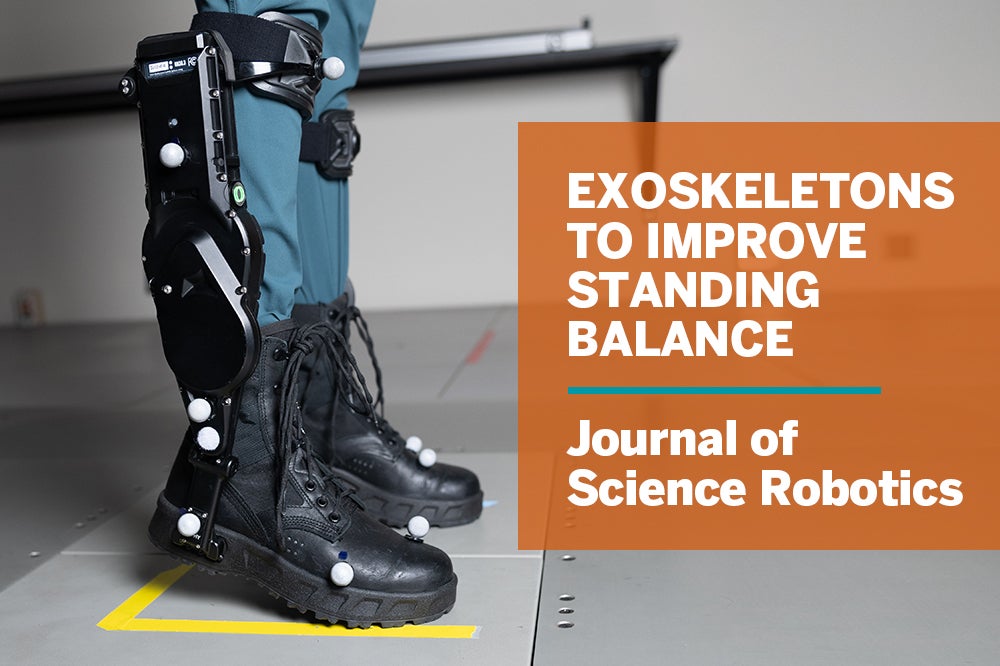
Humans tend to take balance for granted, however every step holds the possibility of a fall, and some falls can be catastrophic. For people with balance impairments such as older populations and those who have Parkinson’s disease or other medical conditions, researchers sought to answer the question of whether wearable robots – like powered lower-limb exoskeletons– can improve balance, prevent falls and enable people to be active for longer.

A new study co-authored by Owen Beck, assistant professor in the Department of Kinesiology and Health Education, was featured on the February 2023 cover of Science Robotics and found that the key to augmenting balance is to have boots that can act faster than human reaction times.
“This is a big step towards developing wearable devices that can improve human balance during everyday life,” said Beck. “Our research shows how artificially fast exoskeleton assistance enhances balance without hindering the person’s natural reactions.”
“Exoskeletons need to react faster than physiological responses to improve standing balance” details the findings of the researchers at the Georgia Institute of Technology and Emory University, where Beck was a postdoctoral fellow during the study.
As part of the study the researchers used a motorized floor to essentially pull out a rug from under healthy participants pitching them forward. They programmed ExoBoots to give the participants a blast of assistance with either the same delay as their natural response or faster than humanly possible and compared that to giving no ExoBoot assistance at all. The researchers found that only the mode that short-circuits the human reaction helped users recover balance faster, and prevented them from taking a step to recover.
The researchers were also able to use ultrasound to look under the skin to see how calf muscles stretched during the slip, and found that the faster-than-human ExoBoot balance response actually eliminated calf muscle stretch signals, but the responses controlling those same muscles persisted. This highlights that the nervous system acts to gather additional information from throughout the body to properly react and remain upright in both standing and walking.
Results of the study and the Science Robotics article can be found here.
In addition to Beck, the study’s authors include Max Shepherd, a postdoctoral fellow at Georgia Tech during the study and now an assistant professor at Northeastern University; Lena Ting, professor and McCamish Foundation Distinguished Chair in the Wallace H. Coulter Department of Biomedical Engineering at Georgia Tech and Emory; Greg Sawicki, associate professor at Georgia Tech; Rish Rastogi, Emory research engineer; and Giovanni Martino, a postdoctoral fellow at Emory during the study and soon to be assistant professor at the University of Padua, Italy.

